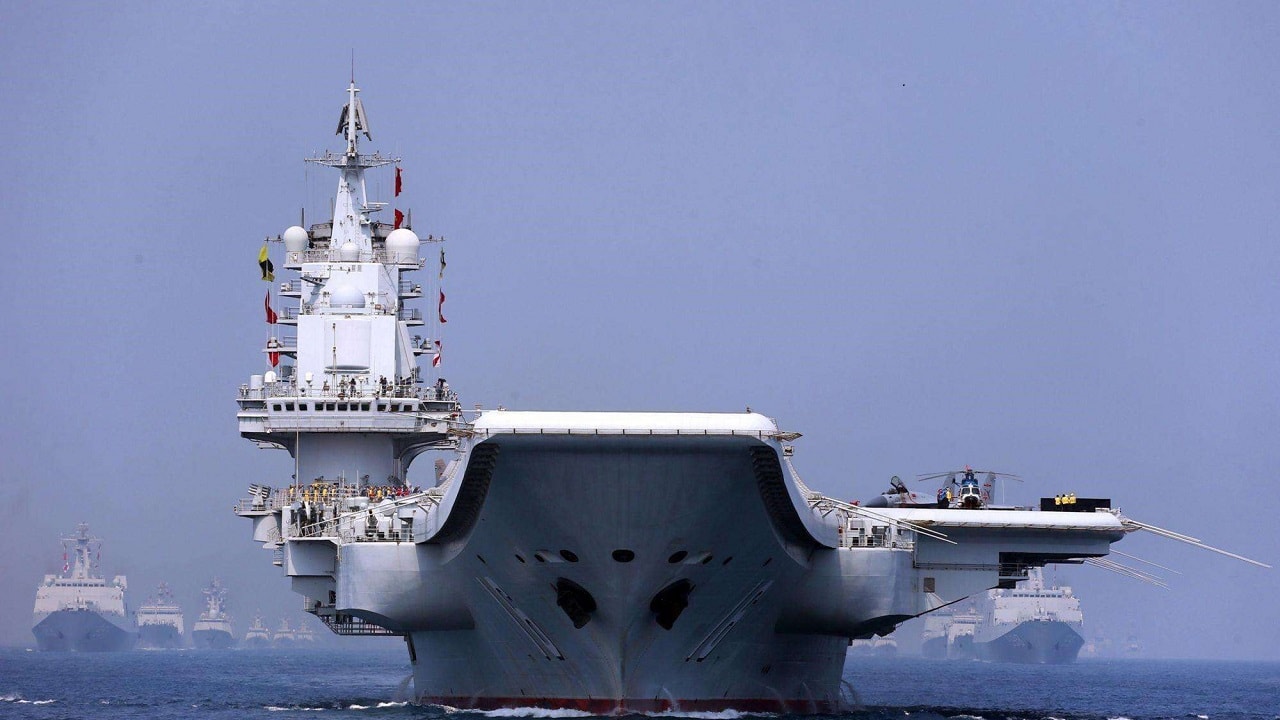China Could Already be Building a Nuclear Powered Aircraft Carrier: Nuclear-powered aircraft carriers have unlimited range and endurance, and are essentially floating airbases able to travel the world’s oceans. Each of the warships is capable of operating for more than twenty years without refueling and has an expected service life that exceeds half a century. Operating a nuclear-powered carrier is no small task, however, which is why the “club” is significantly small.
Only the United States and France currently operate true nuclear-powered aircraft carriers, and that includes the United States Navy’s ten Nimitz-class carriers and one Gerald R. Ford-class carrier as well as the French Navy’s flagship Charles de Gaulle. The British Royal Navy had actually rejected nuclear power early in the development of its Queen Elizabeth-class program, arguing that several decades of fuel would cost less than a nuclear reactor.
Additionally, the Soviet Navy had sought to build a nuclear carrier – but when the Soviet Union collapsed in 1991 the program was essentially dead in the water.
Chinese Efforts
While the Soviets failed and the British opted not to try, China could soon become the third nation to operate a nuclear-powered aircraft carrier.
Construction is already underway on the Type 003, a third conventionally-powered carrier, but Beijing has played a “long game” and plans are reportedly underway for the Type 004, which will likely be significantly larger than the current People’s Liberation Army Navy (PLAN) aircraft carriers in operation.
It could feature nuclear marine propulsion, which could generate enough power for it to be armed with advanced weapons including lasers and even railguns.
China has made great strides in carrier development, and is likely employing the experience that it gained with its preceding Type 003 aircraft carrier. News of the planned nuclear-powered carrier first emerged last year, and while details have remained sparse, it was reported that the Type 004 would also be equipped with an integrated electric propulsion system that will allow the operation of electromagnetic launch catapults. That could also be seen as a major step forward for the PLAN, as currently only the U.S. Navy’s Ford-class employs such an advanced system.
Given that the carrier would be significantly upsized, its airwing could include up to 100 fixed-wing aircraft and helicopters, including the J-15 or even the J-20 fighters as well as Xian KJ-600 airborne early warning and control aircraft, anti-submarine warfare aircraft of the People’s Liberation Army Naval Air Force (PLAAF).
Expanding the Reach of the PLAN
The PLAN has been undergoing a major expansion, as China has also stepped up its shipbuilding capacity and is now the world’s leading shipbuilder. Just in the past year, China launched approximately 170,000 tonnes of new ships including a Type 094A ballistic missile submarine (SSBN), two Type 075 helicopter landing docks (LHD), three Type 055 cruisers, seven Type 052D destroyers, six Type 056A corvettes, six Type 082II mine countermeasure vessels, one cable-laying ship and three Type 927 surveillance ships.
The Type 004 will likely be part of the PLAN’s ongoing expansion, is expected to be completed by the end of the decade, and could enter service by the mid-2030s if not sooner.
More importantly, the Type 004 could actually be just the first of a new class of at least four carriers, which could turn China into a true aircraft carrier superpower – and second only to the United States.
Peter Suciu is a Michigan-based writer who has contributed to more than four dozen magazines, newspapers and websites. He regularly writes about military small arms, and is the author of several books on military headgear including A Gallery of Military Headdress, which is available on Amazon.com.

